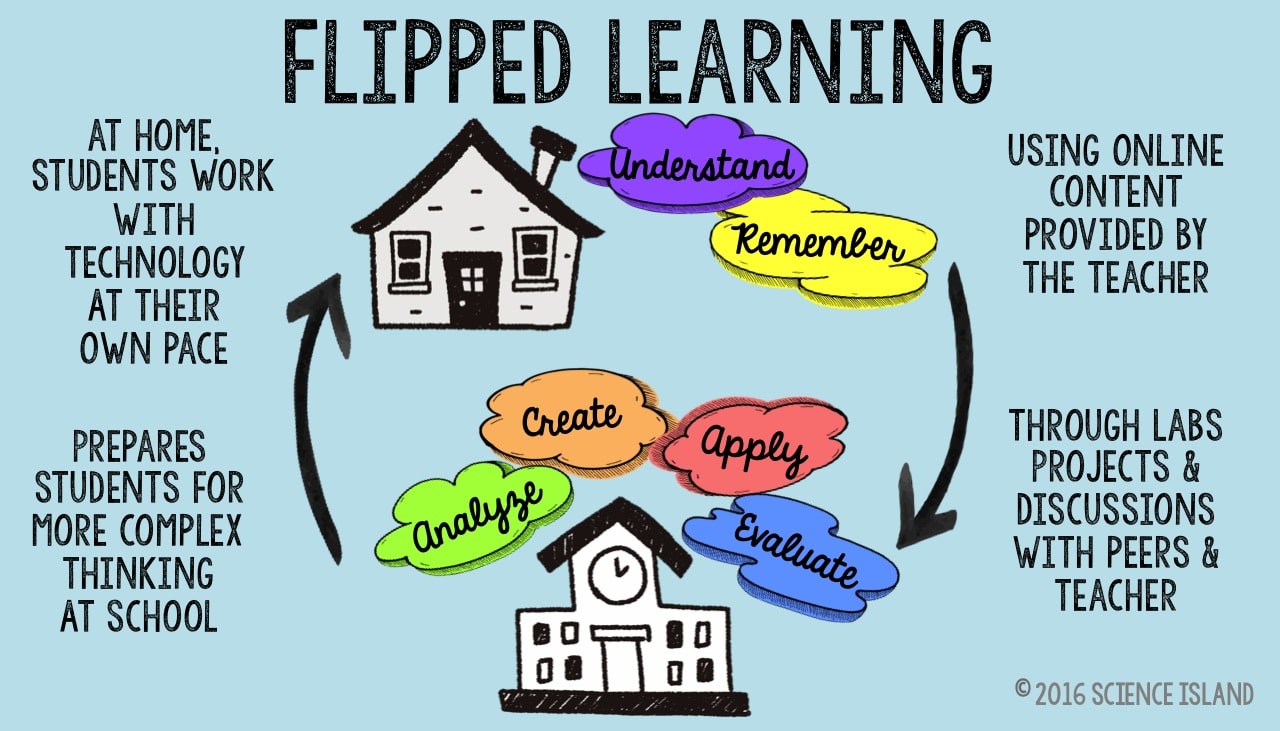
Menu
Aloha! I’m excited to share this post on The Flipped Classroom for Secondary Science Teachers. I’ll examine the essential questions that most middle and high school teachers have regarding how to implement the “flip” and why you even want to. But, I’ll start by laying out a simple introduction to the Flipped Classroom.
The word “flip” is used to indicate a fundamental change in the types of learning activities that are done in the classroom compared to those done at home. For most of my career as a high school Biology teacher, I spent the majority of class time “teaching”. That is, I was doing most of the talking – disseminating information. The students spent the majority of their time listening and taking notes. Of course, I tried to keep things interesting and mix in a variety of instructional methods and technology, but it was still instruction – from me to them.
At home, students were expected to do homework. The assignments varied, but typically they involved reading, answering questions, completing worksheets, preparing for labs, working on projects, and other tasks that involved using the information they were given in class in some way. Homework completion and submission rates varied, and I heard many complaints about being “confused” and, yes, even “my dog ate my homework” on a few occasions.
So, imagine flipping things around. Here’s what it looks like . . .

How does this work? First, teachers provide online video content for the students to access from their personal technology such as a smartphone, tablet, or computer. Students begin to learn the content as they watch the videos and take notes at their own pace. The video segments are kept pretty short; usually about 10-15 minutes at a time.
Second, students return to class ready to process and interact with the content using the information they’ve acquired at home. Now, you get the most out of classroom minutes by answering questions, correcting misconceptions, doing demonstrations, guiding cooperative learning groups, facilitating discussions, and providing hands-on activities such as labs and projects.
Your “teaching” becomes more individualized and customized so that each student receives the instruction they need to really learn the content. You become the guide and subject matter expert and your classroom becomes the place where the deeper learning takes place.
Ready to give flipping a try? Science Island is here to help make your flip as fearless as possible by offering narrated PowerPoint videos for each chapter in Biology and Anatomy & Physiology. Check them out in my shop on this site or on Teachers Pay Teachers.
If you’d like to learn more about flipping your classroom check out my Quick Start Guide to the Flipped Classroom.
Sign Up for the Science Island Newsletter and Free Resource Library.
Then check your email to confirm your subscription.